|
Jesus gives us one of his greatest challenges in the Gospel for today. He says, “Stop judging and you will not be judged. Stop condemning and you will not be condemned. Forgive and you will be forgiven…For the measure with which you measure will in return be measured out to you.” (Lk. 6:27-28) While the last paragraph of this passage is the part that is most often quoted, the first two-thirds are just as challenging. In his words leading up to the well-known “judge not lest ye be judged,” the Lord calls us to be better than just taking the easy way out. Speaking to his disciples, Jesus said, “To you who hear I say, love your enemies, do good to those who hate you, bless those who curse you, pray for those who mistreat you. To the person who strikes you on one cheek, offer the other one as well, and from the person who takes your cloak, do not withhold even your tunic. Give to everyone who asks of you, and from the one who takes what is yours do not demand it back.” The key word is everyone.
He says, “For if you love those who love you, what credit is that to you? Even sinners love those who love them.” He reminds us that the easy way out won’t get us very far in the eyes of God. So you do good to those who do good to you? Even sinners do that. Think, Jesus constantly argued with the Pharisees who were quick to judge others but not themselves: “Why do your disciples pick grain on the sabbath? Why do you dine with sinners and tax collectors?” (emphasis added). Jesus’ response is this, “But rather, love your enemies and do good to them… then your reward will be great and you will be children of the Most High, for he himself is kind to the ungrateful and the wicked. Be merciful, just as also your Father is merciful.” To be merciful, to love even those who we find hardest to love, is to participate fully in the life of God who is merciful. We see Jesus’ command to not judge or condemn taken to extremes on either side. On the one hand, we can take this command to mean that we cannot correct or rebuke someone for their actions, even actions that are harmful to themselves or others. “Jesus said not to judge,” is often used as an excuse for the relativism that permeates our society. We can’t judge what someone else believes. In fact, to even suggest objective truth could be seen as condemnatory or judgmental and, therefore, we can’t do that. On the other hand, some will merely ignore Jesus’ words and condemn others as sinners, which we all are. If we ignore Jesus’ words, we risk putting ourselves on a pedestal, seeing ourselves as the good people and those other sinners as unclean and unworthy of my love and God’s love. In fact, Jesus is calling us to the middle ground. We believe in truth and that people can, in fact, be wrong. With patience and charity, we can judge an action to be right or wrong, but never in condemnation of the person—that judgement is God’s alone. Indeed, it is that understanding that God alone can judge a person’s heart that we must remember at all times, in all of our relationships and interactions. When we love others, friends and enemies, when we save condemnation and judgement of one’s heart for him alone who can do so (the Almighty God), then “For the measure with which you measure will in return be measured out to you.” Lord, Jesus Christ son of God, have mercy on me, a sinner. To learn more about our call to mercy, please click here.
0 Comments
It was my spiritual director who first introduced me to the phrase new normal which has since become quite common in the days of COVID-19. At the time I learned this phrase, my Dad was sick, the situation was changing by the day, and my spiritual director shared a piece of wisdom with me: clinging to the past with no regard to where we stand in the present, let alone where we will stand in the future, is of little good. This doesn’t mean that we can’t look back fondly on memories and experiences—we should—but sometimes it’s necessary to shift our gaze from what was normal to what is our new normal. Turn on the news and we’re bound to hear this phrase mentioned. The elimination of handshakes, added temperature screenings before flying or entering large venues, social distancing—these are all changes that are tossed around as potential aspects of our new normal. Inherent to the new normal is grieving the loss of what used to be normal. On a recent podcast, Brené Brown, a research professor and speaker, spoke with David Kessler, an author and expert on death and grief, about how we, as a world, are collectively grieving during COVID-19. Their first premise is that we must name our grief before we can take it on. As we look to a new normal, we will likely find ourselves grieving many of the simple acts we might have taken for granted. So many of these aspects of our new normal are so far into the future and so uncertain that it might not be fitting for us to focus on them for too long lest we begin to fear for something not even guaranteed for the future. That doesn’t mean that we are not still mourning the loss of our normal and experiencing a new normal every single day. I celebrated my best friend’s birthday last week by sitting 12 feet apart and talking from a distance without even being able to share a hug. For those who have loved ones in hospitals or nursing homes, the difficult and sometimes downright terrifying new normal is not being able to visit them, to comfort them, or to be comforted ourselves. Our new normal might include grieving not being able to go to the store because it’s closed or because we are considered high risk if we contract the virus. In one way or another, we are all facing a new normal, but we must fight the urge to compare whose new normal is worse or more challenging. The necessity to find a new normal isn’t new in itself. After 9/11, we were also forced into a new normal. The same occurred after World War I, World War II, the Spanish Flu, The French Revolution, and the Great Plague which all forced society to adopt a “new normal”. A new normal, however, doesn’t have to be a bad thing. The printing press, the steam engine, and the discovery of penicillin all created a new normal that we are thankful for. Of course, the greatest events which created a new normal were the life, death, and Resurrection of our Lord, Jesus Christ. Think of the Apostles, such as James and John, who were called from a fishing boat to follow Jesus. Their entire conception of normal changed forever in that instance. As our Lord hung from the Cross on Good Friday, the world (especially that of the disciples) faced a new normal. How dejected afterwards were the two on the Road to Emmaus with their new normal, one that seemed to go on without the man they had come to know as the Messiah? Then of course, Jesus rose on the third day; He had defeated sin and death, and an eternal new normal was ushered into the world. That is the new normal which we can turn to in every moment when our lives are forced into a new normal we may not have asked for. Jesus Christ, God made flesh, He who was and is and is to come, gave all of creation a new normal which rings eternal. Nothing that happens in our world can change what He did for us in His life, death, and Resurrection. We are faced with a constantly changing new normal and we have to name our grief and understand that some of what we once knew is no longer our normal. In doing so, may we always be rooted in Christ who stands above the chaos as the rock of our salvation.
4/7/2020 Spiritual Friendship: Accompanying College Students During COVID-19 | COVID-19 ResourceRead NowA few of my staff colleagues and all of our interns at the Catholic Apostolate Center are undergraduate students at The Catholic University of America. We, like university students across the country, find ourselves doing remote coursework, dealing with unresolved goodbyes that were meant for a week of break and not months of uncertainty, and the seniors are facing the reality of a delayed, if not completely cancelled commencement. Jonathan Sitko, Assistant Director of Programs for the Catholic Apostolate Center, recently wrote a blog post titled “Accompaniment in Isolation” in which he said, “Each one of us is called to accompany others on the journey of faith. Christ himself modeled this with his disciples and has charged us to do the same. Accompaniment is fundamental to Christianity.” In this time of great uncertainty, I think of my friends, university community members, and all of the college students across the country who are in need of exactly this—of accompaniment. The Art of Accompaniment: Theological, Spiritual, and Practical Elements of Building a More Relational Church reminds us that, “Accompaniment is not for a few ordained or specially commissioned lay ministers; it is a call put forth to all the baptized by the Spirit of God.” I hope that our campus ministry programs are finding ways to accompany students in these times through personal communication when feasible, opportunities for virtual community, and streamed prayer opportunities. These are important and stress the nature of community within our campuses and the desire for students to regain a sense of normalcy in a situation that is so abnormal. The efforts of our campus ministries cannot lead us, the baptized- students, friends, and community- to sit passively. The call that we as students receive in this time of crisis is a call to accompaniment, empowered by the Holy Spirit in Baptism, strengthened at Confirmation. We turn our attention to the dimension of spiritual friendship that the Art of Accompaniment reminds us is, “Like two friends who travel together, this spiritual journey is not undertaken through the sharing of experiences, a character of warmth and tenderness, and involves catching sight of the action of God in the lives of one another.” We are all, in some way, grieving the loss of the life that we once held to be normal; we are all experiencing change, uncertainty, and unrest; and we are called to accompany one another through that. This distinct dimension of accompaniment reminds us that accompaniment is not a hierarchy, that there are not ranks or levels, but that we can accompany in mutuality and reciprocity, as friends, as Jesus calls us to be. St. Vincent Pallotti believed that in our spiritual weakness, God communicates his infinite mercy to us. But in times of great unease, it can be hard to hear him. Accompaniment allows us to dialogue together so to best hear his voice, to pray together for the greatest needs and hopes that we hold, and to witness hope to one another—hope that springs eternal from Christ himself who is alive, who loves us, and who saves us. Here are some suggestions for how college students can accompany one another during COVID-19:
For other reflections to accompany you during this time, please click here.
4/7/2020 Cooking During COVID-19: Ten Tips for Nourishing Your Body and Soul | COVID-19 ResourceRead Now“As chefs, we know that good food provides not only nourishment, but also comfort, especially in times of crisis.” -Chef Jose Andres When Hurricane Maria hit Puerto Rico in September of 2017, there was a great need for food- not just for the necessary nourishment, but also because “good food provides. . .comfort, especially in times of crisis.” Chef Andres and his team at World Central Kitchen provided 3.7 million fresh, never pre-packaged, locally sourced meals for the people of Puerto Rico as they recovered from Hurricane Maria. While our current situation in the midst of the COVID-19 pandemic likely doesn’t call us to produce millions of meals, Chef Andres’ thesis remains true—food brings comfort, especially in times of crisis. Chefs like Jose Andres and Andrew Zimmern were a large inspiration for me to pursue a degree in Culinary Arts. They helped me to see that food is not only tasty, a way to earn a living, and a creative outlet, but that it is a way to build community, to learn about culture, and to cultivate human bonds around our tables. Despite changing the scope of my career, food still plays a big part in my life. When I cook for friends and family, we are able to be together at table, just like Jesus invites us to. I see questions every day on social media from friends asking how best to cook this or bake that, for tips and tricks, so I figured I would provide some of my tips. So here are ten tips for cooking during the pandemic, quarantine, and crisis.
"What about you? What are you going to do?" These are the words of Pope Leo XIII to St. Katharine Drexel, whose feast day we celebrate today, when she spoke to him of the needs of the missions in Wyoming. The Holy Father’s response stopped Sister Katharine in her tracks, but it also made her reconsider how she approached her life of faith. Sister Katharine returned to the United States and went on to found over fifty missions for Native Americans, a system of schools for Black Catholics, and various other mission centers and schools. Every day, Christ poses to us a question similar to the one Pope Leo XIII posed to St. Katharine Drexel: “What about you? What are you going to do?” Pope Francis spoke of this encounter when he visited Philadelphia for the World Meeting of Families in 2015. He commented on the fact that St. Katharine was herself young and full of fervor for the Lord and wondered rhetorically how many young people around us have a similar energy and fervor. He asked in his homily at Sts. Peter & Paul Cathedral in Philadelphia “Do we challenge them? Do we make space for them and help them to do their part? To find ways of sharing their enthusiasm and gifts with our communities, above all in works of mercy and concern for others? Do we share our own joy and enthusiasm in serving the Lord?” The Holy Father touched on the call of all of the baptized to be missionary disciples. This call requires us to be open to all that the Holy Spirit may be guiding us to while still carrying forth the legacy of the past. The third major point that the Holy Father addressed was the role of the laity. He said, “We know that the future of the Church in a rapidly changing society will call, and even now calls, for a much more active engagement on the part of the laity.” The Holy Father’s point is that to properly answer the question, “What are you going to do?,” there must be collaboration by and co-responsibility of the lay faithful who work together with the ordained to make manifest the redemptive and salvific nature of the Church of Jesus Christ. The Holy Father then reminds us that this collaboration and co-responsibility is not a game of power and position. He says, “This does not mean relinquishing the spiritual authority with which we have been entrusted; rather, it means discerning and employing wisely the manifold gifts which the Spirit pours out upon the Church.” Each of us have been given different gifts and charisms that build up the Kingdom of God; the Holy Father challenges us to use them. The questions that Pope Leo XIII asked St. Katharine Drexel are the questions of vocation. In both our universal call to holiness that we receive from our baptism and in our particular vocation, we are faced with these questions: “What about you? What are you going to do?” We are not necessarily called to build up schools and mission centers as did St. Katharine, but to answer these questions we must be willing to be open to where the Spirit is guiding us, to see how our gifts and talents can be best utilized for the Kingdom and to answer our call to be “leaven of the Gospel in our world.” For more resources on missionary discipleship, please click here. For more resources on collaboration and co-responsibility, please click here. “Who did you pick as your confirmation Saint?”
“St. Vincent!” “Oh cool, St. Vincent DePaul, that’s great!” No…not him…St. Vincent Pallotti…” “Who is that?” The name game for saints with common names is a frequent and sometimes frustrating occurrence, as is often the case with St. Vincent Pallotti—my patron, confirmation saint, and friend. Pallotti was many things: the friend of popes and cardinals, confessor of many of the religious in Rome at the various colleges, and great supporter of the laity. Throughout his 55 years of life, Pallotti did everything for the infinite glory of God (infinitam Dei gloriam). His life, message, and charism were life-giving and meaningful while he was alive, as well as today. Many saints can seem out of our reach—St. Joseph of Cupertino is known for flying and St. Padre Pio of Pietrelcina received the stigmata. While there are accounts of St. Vincent Pallotti levitating and bilocating, his life and legacy are not marked solely by these acts of mysticism. One of the main reasons that Pallotti’s example resonates so deeply with me in 2020—170 years after his death—is because of how humble and “normal” his life was. Now, “normal” is quite relative, but in comparison to many well-known saints, Pallotti’s life was normal, even boring. Pallotti’s parents were devout and his love for Christ and the Church was evident from a young age. There are many stories of St. Vincent’s great care for the poor, including a story of him giving away his bed to a beggar. St. Vincent was not a particularly good student as a young boy, and it was not until his mother prayed a novena to the Holy Spirit for his education that Pallotti became a model student. As a priest of the Diocese of Rome, Pallotti spent much of his time hearing confessions. After a cholera epidemic struck Rome in the mid-1800s, Pallotti founded a home for orphaned girls. He set up night schools so that working men could receive an education. He was also a mathematician. In fact, it was in his study of calculus that he came to understand God as Infinite Love. There was no deed too small, no task unworthy of his effort. To the 2020 Catholic Church in the United States, Pallotti’s great interest in collaboration with and co-responsibility of the laity might not seem outrageous, but in the 1830s and 1840s in Rome, it was. Many of Pallotti’s closest collaborators were lay people, one of whom was Blessed Elisabetta Sanna. He also made sure that the various ministries and apostolates that he established involved the laity not just as pawns or placeholders, but as central actors in the life of the Church. St. Vincent Pallotti can teach us so much. He struggled greatly with anger and pride; in this we learn that we are not alone in our personal struggles. He lost many of his siblings when he was young; in this we learn that we are not alone in our loss. He turned people’s attention to God when he distributed pamphlets during the Roman carnival, or when he would drop a reliquary from his sleeve so that the Romans who would come to kiss his hand (as was customary to do to priests at the time) would kiss it instead of him. In this, we learn that we too can persevere when the world around us tells us things that are contrary to what we believe. I learn from St. Vincent Pallotti every day. He is a model for me in perseverance, humility, and devotion to God. When I sin and fall, I remember his personal reminder that he was but “nothingness and sin.” When I look at the apostolic works that I take part in, the ones that are looked down upon or seen as unrealistic, I think back upon Pallotti and the same judgements that many must have made about him. The greatest influence that St. Vincent Pallotti has had on me is the image of God as Infinite Love—that Infinite Love can love me at my best and my worst. The Infinite Love of God is what balances the scale with sin on one side and being the beloved of God on the other; it reminds us who God is in his greatest depth. My life and my faith have been so greatly touched by St. Vincent Pallotti and I am deeply thankful for him. May he continue to intercede for us all and may we, as we undergo our apostolic works, look to him as a mentor, a guide, and a dear friend. St. Vincent Pallotti, pray for us. To learn more about St. Vincent Pallotti, please click here. A few weeks ago, the Pew Research Center released an article titled “Just one-third of U.S. Catholics agree with their church that Eucharist is body, blood of Christ.” Immediately after the study’s release, social media erupted with reactions of disbelief, shock, and anger, as well as theories of how to “fix this,” including greater catechesis and adjustments to our general liturgical practices. Despite the immediate reaction, there is no need for panic, as Christ assures the Church that “the gates of the netherworld shall not prevail against it,” (Matthew 16:18). Furthermore, jumping to such dire conclusions after one survey is not necessarily good pastoral or catechetical practice. As the Church examines the status of belief in the Real Presence and how to cultivate a greater understanding of that reality, she is also very aware of the need to deepen our encounter with Christ. As we ponder Christ’s presence in the Eucharist, we must ask ourselves if we have truly encountered him. In his encyclical letter Evangelii Gaudium, Pope Francis suggests that we “look at those first disciples, who, immediately after encountering the gaze of Jesus, went forth to proclaim him joyfully: ‘We have found the Messiah!’ (Jn 1:41).” In the end, how we catechize and what our liturgical practices are both require deeper reflection and greater discernment as to how God is calling us to use them as methods of ongoing conversion and evangelization. The doctrines and dogmas that we teach, how we celebrate the Mass, how we best serve our fellow man, are all likely to fall on deaf ears if they are not built on a deep and personal encounter with the Risen Christ. To examine this issue of Eucharistic belief, we should first look to chapter 4 of Christus Vivit, where Pope Francis reminds young people (and all of the people of God) that God is love, he saves us, he gives us life, and he is alive! If these four truths, which are expounded upon in good catechesis and experienced in their fullness in the Mass, are not understood deeply and intimately in the heart of every baptized Catholic, then moving forward will be extremely difficult. If I do not know Christ as the one who saves me, who walks with me through my life, as the one who gives me life, then why does it matter if it is truly his Body and Blood that I receive in its fullness at the Mass? Similarly, if we don’t understand the Kerygma—the mystery of the salvific work of God culminating in the passion, death, and resurrection of Christ—then how can we begin to understand the mystery of transubstantiation (CCC1376), especially when philosophical distinctions like matter and form aren’t in the everyday vocabulary of most Catholics? Pope Francis reminded pilgrims of this reality during a November 2017 General Audience when he said, “Every celebration of the Eucharist is a ray of light of the unsetting sun that is the Risen Jesus Christ. To participate in Mass, especially on Sunday, means entering in the victory of the Risen, being illuminated by his light, warmed by his warmth.” Pope Emeritus Benedict XVI famously wrote in his encyclical letter Deus Charitas Est, “Being Christian is not the result of an ethical choice or a lofty idea, but the encounter with an event, a person, which gives life a new horizon and a decisive direction.” I certainly don’t have the “easy fix” answer as to how to increase belief in the real presence in the Eucharist, but I heartily believe that it begins with a renewed sense of the encounter Pope Benedict XVI was writing about. We use the word “renewed” because even those of us who profess our faith in the Risen Lord are invited “to a renewed personal encounter with Jesus Christ, or at least an openness to letting him encounter them; I [Pope Francis] ask all of you to do this unfailingly each day” (Evangelii Gaudium). We must witness to the encounter that has given our lives “a new horizon and a decisive direction,” and share that with those whom we meet. When we accompany our brothers and sisters on their journey to know Christ more fully, we help them to encounter him in the way that the Holy Spirit guides them. If that encounter is through theological and philosophical distinctions, through service, through the liturgy, etc. then praise God, because it is through him that those are effective and not because of their own merits. As we continue to wrestle with this recent study and its implications, may we meditate on this: if we believe that the Eucharist changes us, strengthens us, heals us, then we must show it, we must witness to it authentically and humbly in all circumstances. After the Post-Synodal Forum in Rome, I had a few days to spend in the Eternal City visiting friends and taking in some of my favorite sights During my time there, I also saw a fair amount of my new friend and co-delegate to the Forum, Brenda Noriega from the Diocese of San Bernardino in California. I had been to Rome before, but Brenda hadn’t, so my time in Rome was a new experience in many ways. As we made our way into St. Peter’s Square during Brenda’s first time in the Vatican, she mentioned how it seemed as though most of the people there were tourists as opposed to pilgrims. She wasn’t wrong. As we made our way into St. Peter’s Basilica, we experienced deep prayerful encounters at the tomb of Pope St. John Paul II and in the Adoration Chapel of St. Peter’s, but we couldn’t help noticing the constant click of cameras around us and the onslaught of tour groups. Brenda was, understandably, taken aback by the reality that the city that is at the heart of our faith seemed to be more of a museum than a place of pilgrimage I have a love-hate relationship with the Eternal City, but what I love is the art, the history, and the architecture. Sharing that experience of Rome with Brenda made me think, “How often do we treat our faith and our experience of it as a museum and not an experience of miracle?” It’s so easy to do in Rome. I love walking around and seeing historic places like St. Peter’s or the Chiesa del Gesù, which is the mother church of the Jesuit order and the first baroque church ever built. The Gesù is known best for its trademark baroque façade, its ceiling painting (the Triumph of the Name of Jesus by Baccicio), the beautiful gold gilding, and the tomb of St. Ignatius Loyola as well as the arm of St. Francis Xavier. This time I made a special trip to the relic of St. Francis Xavier to pray for a friend who heads on mission soon, but this prayerful experience wasn’t always my norm. How many times have I walked into that church and treated it like a museum? The arm of St. Francis Xavier is there because of his immense holiness, but for many (including myself at times) it is nothing but a photo opportunity. The Triumph of the Name of Jesus is painted to display Philippians 2:10 which reads, “that at the name of Jesus every knee should bend, of those in heaven and on earth and under the earth.” But how often did I look at it as if it were the Mona Lisa or just another piece of art in a museum? We might think to ourselves, “I don’t live in Rome, so this can’t happen to me!” How often, though, do we shuffle into Mass expecting to hear stories of a man named Jesus who lived two thousand years ago? When we see our faith as a museum, we miss the miracle. We miss the truth that, as Pope Francis reminds us in Christus Vivit, Christ is alive. The Scriptures aren’t just antiquated books like those that we can find in a library or hall of records, but they are the Word of God truly alive. The Eucharist that we receive is not just bread and wine, but the Body and Blood, Soul and Divinity of Jesus Christ, truly alive. Our faith has history and tradition, that is for sure, but it is not a museum. Our faith is not just a collection of gold chalices, stained glass, historic cathedrals, and antiquated practices, but is truly alive. Our faith, when seen as a miracle, allows us to enter deeper into the depths of the Church, into the depths of Christ and his life, into the depths of the mysteries of the Trinity, and into the depths of our relationship with Christ who is alive and who has come to save us. May our faith always be a lived miracle, never just a museum. For more resources on the Synod on Young People, Faith, and Vocational Discernment, please click here. “Think big, start small.” That was the one-phrase summary that my working group at the Post-Synodal Forum on Young People presented on our last full day at the Il Carmelo retreat house. For three and a half days, over 250 youth and young adults from over 110 countries and over 30 Catholic groups and movements gathered in Rome to discuss the Synod on Young People, the Faith, and Vocational Discernment and Pope Francis’ Apostolic Exhortation Christus Vivit. My group was comprised of fourteen delegates who represented nations including India, Germany, Zambia, Slovenia, Moldova, and more. We came up with these four words (Think big, start small) because over the course of the many panels, presentations, interventions, and working group meetings, we realized just how big of an endeavor engaging the young people of our global Church is. Country to country, diocese to diocese, some general patterns remained the same. Christus Vivit and the synod present a beacon of hope; unfortunately, in many countries the document has not been widely read, although it has been generally well liked when it has been read. In many places, the document is not translated into the necessary languages. My friend Stephen from Hong Kong, for example, mentioned that young people simply cannot afford a printed copy of the document in his country. Many young people mentioned how they face opposition from clergy and lay people regarding their active role in the Church. One of the delegates from Ireland recalled an instance when a new dishwasher was touted as more important for her parish than funds to go to youth ministry when they were needed. The challenges that face us are great and they are global, but young people, and the members of the clergy and laity that support them and collaborate with them, will not be stopped. In chapter four of Christus Vivit, Pope Francis reminds young people that they are loved by God, that Christ saves us, and that Christ is alive! These words have settled deep into the hearts of young people and the people who advocate for and accompany them. Many times, Pope Francis has reminded young people that they are protagonists in the Church, that young people are not just the future of the Church, but also the now of the Church. These realities came up over and over again in our discussions at the forum. I was amazed by the initiatives in Ghana for ministry to young people that included a separate and distinct ministry to young people who are imprisoned. I was happily surprised to hear that many nations had national youth organizations that are led by young people. For example, my friend from India, Jesvita, is the most recent president of an Indian Catholic Student movement. Importantly, these initiatives are not ones that exist within a “young people bubble,” but are movements and ministries of collaboration that see the young people, the clergy, and their ‘elders’—as Pope Francis calls them in Christus Vivit—working together, being synodal. The biggest takeaways from this forum are encouraging to say the least. Young people understand the need to be people of action, or apostles on mission. Only then can we truly be leaders. These actions must be concrete, not vague generalizations, and they must be collaborative. Young people want to integrate what the Holy Father has written for us in Christus Vivit into how we approach our ministry to young people. The principle of accompaniment was one that was constantly highlighted at the forum, proof that young people want to be a generation of encounter. The first line of our ten-line summary that was presented to the Dicastery and the Holy Father read, “we are the face of Christ, fully alive.” And this is how we move forward, with an understanding of the reality that we are the face of Christ in our world, that we are protagonists. Acting with Christ as our guide, we seek the conversion of hearts, both ours and those of others, and we have dreams that are big. May we never be deterred, may we always think big and start small, and may we always seek to build the Kingdom of God by walking together, listening to one another, and persevering in our shared faith. For more resources on the Synod on Young People, Faith, and Vocational Discernment, please click here. When I was younger, I often found myself scandalized by the actions of other people. I grew up with a very legalistic morality which sees rules and laws as black and white imperatives. On the one hand, there is a benefit to seeing the value of rules and laws which—when just—help to guide society in the right direction. On the other hand, a legalistic morality fails to see others with eyes of compassion and mercy, the same eyes through which Christ sees humanity and through which he asks us to see as well. When we see people as a compilation of their successes and failures, we do not see the whole person and only focus on what they have done or failed to do. This mindset was often exemplified by the Pharisees who clashed with Christ, as demonstrated in the story of the woman caught in adultery. When the Pharisees brought this woman before Jesus, they did not expect him to respond with compassion. In this passage, the Pharisees and scribes remind him that the law of Moses commands her to be stoned. In response, “Jesus bent down and began to write on the ground with his finger,” and said, “Let the one among you who is without sin be the first to throw a stone at her” (John 8:1-11). Christ reminds us to see with eyes of compassion, but also provides a mirror with which to examine ourselves and our own sin. This is not the only time that Jesus presents us with this challenge. In the Gospel of Matthew, he says, “How can you say to your brother, ‘Let me remove that splinter from your eye,’ while the wooden beam is in your eye? You hypocrite, remove the wooden beam from your eye first; then you will see clearly to remove the splinter from your brother’s eye.” In both cases, Jesus invites those listening to a profound self-examination that leads to conversion rather than self-righteous judgment. In the story of the adulterous woman, we learn that Christ does not allow us to continue wandering aimlessly in our sin but gives us a new directive: “go and sin no more.” The eyes of compassion with which God sees us, and through which we are called to see others, are not blind. Compassion does not mean that we can do whatever we want even if it is detrimental to ourselves, others, or our relationship with God. What God is asking of us is a contrite heart that continually returns to his infinite love. When we sin, we separate ourselves from our neighbor, from God, and from the depths of his infinite love. When Christ says to sin no more, as he did to the woman caught in adultery, he is also telling us to love more fully. To see with eyes of compassion sees this reality and doesn’t mistake our sin as simply breaking a rule. Eyes of compassion allow us to walk with the other person and be walked with ourselves in order to overcome the sins that weigh us down. Today, let’s choose to look with the eyes of compassion and mercy as we strive to follow Christ’s call to “go and sin no more.” The word vocation comes from the Latin “vocare,” which means to be called. Like any call, we are offered a choice to answer or ignore it. Assisting others in discerning their apostolic vocation in life was an important aspect of the ministry of the Catholic Apostolate Center’s patron, St. Vincent Pallotti. Pallotti had a great belief in apostleship and what the Church today refers to as the “universal call to holiness.” Many years before the Second Vatican Council formally addressed the role of the laity in the Church, Pallotti understood deeply that each member of the Body of Christ plays a significant role in evangelization. This included the active participation of the laity in collaboration with priests and religious. As the Union of the Catholic Apostolate stated in a 2012 reflection, “Saint Vincent Pallotti was the first to show that the laity on their part share different talents and vocations, possess hidden treasures, and should be employed in the work of evangelization, of edification and of sanctification.” All of this work comprises our vocation, and is what I’m referring to when I speak of our vocation with a little “v.” Before we can begin to think about whether God is calling us to religious life, marriage, or the celibate single life (known as our Vocations with a capital “v”), we must first look to live out the calling he gives all of us: holiness. I was raised outside of the Church. As a result, I wasn’t exposed to our beautiful faith (outside of my baptism) until high school. It wasn’t until three years into my high school career that I began to see religion, which had forever been just a class to me, as being something worth pursuing. Yet in high school, I more deeply came to understand Jesus’ words in Mark 2:17, “It is not those who are healthy who need a physician, but those who are sick; I did not come to call the righteous, but sinners." A life of apostleship, which will lead to the better discernment of our Vocation, is not one of perfection, but of accompaniment and relationship building. We accompany others as they live out their vocation. Similarly, we are accompanied, which helps us keep going when we fall. Our vocation is not something that we choose when to live out, but rather it is an essential and fundamental part of our lives as Christians. As baptized members of the faithful, we are called to live out our baptismal offices of priest, prophet, and king. To live out this call to holiness we must begin with prayer. Prayer, as St. Vincent Pallotti said, “consists in directing all one’s thoughts, words, and actions on God.” In fact, we should pray so much that we “pray without ceasing.” That means that we are living lives that are so full of God, so full of doing his will, that all of our actions, words, and thoughts become a prayer. It can be helpful to remember that prayer is a dialogue. Sometimes we talk and other times we are silent, waiting to hear the voice of God in whichever ways he decides to speak to us. Secondly, we live out our vocations of holiness by living a life of doing good and avoiding evil. This comes from practicing charity with our neighbors and with ourselves and from opening our hearts to those around us who Pope Francis would say are “at the margins.” Through the living out of our vocation, we help others to encounter Christ. This encounter is at the heart of our faith. As Pope Benedict XVI said, “Being Christian is not the result of an ethical choice or a lofty idea, but the encounter with an event, a person, which gives life a new horizon and a decisive direction.” Lastly, we must take part in the sacraments. God’s plan for our salvation is rooted in Christ, whose grace is poured out in all of the sacraments. We should receive the Eucharist, spend time in Adoration, and frequently receive his mercy in the Sacrament of Reconciliation. We have been given all of the tools necessary for living lives of holiness. Those tools are strengthened when we receive the sacraments. So how does living out holiness, our lowercase vocation, pertain to our Vocation? I would argue that living out our Vocation, the call to religious life, priesthood, marriage, or the celibate single life, is one of the highest achievements of living out our vocation. A marriage cannot thrive, for example, without love, hope, mercy, prayer, and kindness. Neither would the ministry of a priest or religious sister. When we truly see the beauty of the promises of Christ: salvation, freedom, mercy, and redemption, we naturally want to know how best to achieve and share them with others. When we understand our call to holiness, and live out our vocations, uppercase and lowercase “v,” then we will help to become saints and build the Kingdom of God. For more resources on Vocational Discernment, please click here. The candy has gone on sale, the post-Thanksgiving “leftover sandwich” has been eaten, but it’s not time to deck the halls just yet. As many prepare for the joyful season of Christmas, complete with mall Santas, holiday movies, and plans to celebrate the Nativity of Jesus Christ, the Church prepares during the season of Advent. This time isn’t just for buying gifts and putting up the tree, but to prepare ourselves spiritually for the coming of Christ. This season of preparation can be traced back to 4th century France, though the Advent we are familiar with can be traced back to Pope Gregory I and Rome in the 6th and 7th centuries. Whereas Lent is a time of penance for Christians, Advent is a time of preparation and hope. Not only do we prepare for the birth of the Lord, but we also look to the Second Coming of Christ. The first coming of Jesus at Christmas opened the doors for our salvation and prefigures his Second Coming. It is because of this hope that Advent focuses on light and not darkness. This light can be symbolized in the Advent wreaths that adorn Churches and the houses of the faithful. The four candles represent the four weeks of Advent, three purple and one rose. The purple candles represent prayer and sacrifices that are undertaken in preparation for the coming of Christ. The rose candle, lit on Gaudete Sunday (the third Sunday of Advent), is a symbol of rejoicing as the faithful have reached the midpoint of the season. When we thank God for the forgiveness of our sins and for the chance to be with him for all eternity in Heaven, we often think of Easter, but Christmas is necessary in the plan for our salvation as well. Before Christ could suffer and die for us, achieving our redemption and the path for our salvation, he had to become man. What a gift this is! If you follow the Franciscan theology of the incarnation as proposed by Bl. Duns Scotus, Christ would’ve become man with or without the original sin of Adam and Eve, but his mission of salvation makes his Incarnation that much more special for us. As Pope Benedict XVI said at a General Audience, “[Bl. Duns Scotus] reaffirmed that the Incarnation is the greatest and most beautiful work of the entire history of salvation.” Jesus, the God of all the universe, became man. But he did not just become a man—he became a vulnerable baby born in a manger. As we encounter him every time we partake in the Eucharist, let us pray and meditate upon the fact that God became vulnerable for us. God loved us so much that he became man. Years after his birth in a manger, he took on our sins so that we may be with him forever. Just as we prepare to receive him into our bodies when we receive the Eucharist, let us prepare to receive the Lord into the world this Advent and make ourselves more worthy of him. Advent is our time to come closer to Christ, to meditate on how he is present in our lives, and to see how he has called us to live with our fellow man as we await his Second Coming. While prayer, fasting, and almsgiving are certainly emphasized during the season of Lent, they can also be integral parts to our preparation for Christmas. May we pray for Christ to be present in our lives and for us to do his will at all times; may we fast from the things that lead us away from him; and may we give alms to those who are less fortunate than us. In these ways we prepare for Christ during Advent as we await both his Nativity and his Second Coming. Question for Reflection: What are some Advent traditions that have helped you prepare for the coming of Christ? For more resources to help you throughout the Advent season, please click here. The Vatican and the surrounding streets have begun to empty—not of tourists, but of the three hundred bishops and young people present for the Synod on Young People, the Faith, and Vocational Discernment. From October 3rd through October 28th, Pope Francis met twice a day with bishops and young people from around the world. The days began at 9:00am with morning prayer led by Pope Francis before the first session of the day when participating bishops and auditors (essentially listeners, young people who were brought in as experts for the Synod) gave their four-minute interventions (a short speech addressed to the assembly). An afternoon break led into the second session that began with prayer before more interventions were given. The last major part of the synodal process involved small groups, called circoli minori, that contained bishops and auditors who discussed the interventions of the day and worked to write reports. American representatives to the Synod included Cardinal DiNardo of Galveston/Houston, Bishop Caggiano of Bridgeport, and Jonathan Lewis from the Archdiocese of Washington. Being from all over the world, the Synod fathers brought different views and experiences of the global Church. Some, like the bishops from Africa, spoke of flourishing churches overflowing with the faithful, while others, like the bishops from the US and Australia, talked about the pain that the faithful from their countries are feeling. No matter where they came from, the participants of the Synod shared a common goal: to have prayerful discussion about the three topics of the Synod. The discussion of young people, a term in the US that refers to people from the ages of 18-35, took center stage for much of the three-and-a-half-week process. How to deal with low numbers of vocations to the priesthood or religious life in certain parts of the world, the realities of technology within the sphere of evangelization, and the role of women within the Church were some of the many topics discussed that are important to the young people of the Church today. The US bishops present acknowledged the damage done to the Church’s credibility due to the ongoing crisis, and Cardinal Cupich of Chicago noted the need for humility and acknowledgement of fallibility among leaders and adults going forward to help rebuild the relationships that have been broken. Inside the Synod Hall, in the press rooms, and out on the streets of Rome, there were many reasons to be optimistic and hopeful in the outcomes of the Synod. Bishops could be seen with the young people from their countries, giving talks on the topics of the Synod, and spending time with young people in Rome—bringing to life the words spoken in the Synod Hall. One term worth noting, and one that will be incredibly important to the actualization of the Synod within the Church, is accompaniment. The concept of accompaniment was very important to the initial documents of the Synod, to the daily interventions, and continues to be to the life of the Church outside of the hall. Accompaniment, as the final document notes, draws its origin from Luke 24:13-35, the story of the Road to Emmaus. Accompaniment means walking with someone on their journey with Christ. This walking involves prayer, listening, prayerful instruction, and dialogue. The goal of the journey is Heaven. The Synod Fathers and Pope Francis see the importance and need for accompaniment due to the many different individual circumstances that young people encounter on a daily basis. It is through accompanying others, and allowing ourselves to be accompanied, that we will help one another get to Heaven. May we pray that the Holy Spirit guides the implementation of the Synod, that our Church leaders will lead with integrity and be guided by what they learned from the Synod, and that all be done for the infinite glory of God. For more resources on the Synod on Young People, the Faith, and Vocational Discernment, please click here. 11/6/2018 The Synod in Action: Reflections from Mass and Dinner with Cardinal DiNardo and Bishop CaggianoRead NowOn Thursday October 25, 2018, the students of The Catholic University of America’s Rome Campus welcomed two of the US bishops present for the Synod, as well as USCCB and Archdiocese of Washington (ADW) staff, for the celebration of Mass and dinner. The Catholic Apostolate Center has given me many different and beautiful opportunities over my time on staff, and this evening with our Church leaders was no different. During my work in Rome for the Center, I was introduced to Mr. Paul Jarzembowski, the Assistant Director of Youth and Young Adult Ministry for the USCCB. Paul was here in Rome for the entire month with the Bishops. Over these past few weeks, we were present at many of the same events. After talking with Paul and explaining the group of diverse young people we have here on campus, we decided to invite some of the US Bishops to join the CUA students for Mass and dinner. Through God’s grace, Cardinal DiNardo from Galveston/Houston and Bishop Caggiano from Bridgeport graciously agreed to join us at our campus. Joining them were Paul, as well as his colleagues Dominic Lombardi and Connie Poulos from the USCCB, Jonathan Lewis from the ADW, who served as an auditor for the Synod, and Jonathan’s wife, Gina. We arranged for a special dinner in our dining room and I organized the liturgy and seating arrangements. The goal for the night was not just for the bishops and staff to pop in and pop out, but for them to join us as the Synod has invited us, in listening and accompaniment. When we, as Christians, join for the celebration of the Mass, we are gathered around the Eucharist, or as Lumen Gentium described it, the “source and summit of the Christian life.” The dinner that followed offered a great opportunity for our Church leaders, who were not only present for the Synod but who also work with young people on a daily basis, to listen to young people, to engage them in conversation and dialogue as the Synod and Pope Francis have prompted. In his homily, Cardinal DiNardo implored the young people in attendance to continue to pursue excellence in their studies, personal lives, and most importantly, in their spiritual lives. The small chapel on our campus was full with the sounds of praise and the beauty of silence that so fittingly belong in the celebration of the Mass. When Mass finished we proceeded to the dining room. At each table sat a Church leader and a large group of our students, ready to talk and to listen. It was a pleasure to talk with Cardinal DiNardo. I felt that he was intent on listening to each one of us. As the evening came to a close, Bishop Caggiano and Cardinal DiNardo went table to table to talk with each of our students and to thank them for a beautiful evening. Thursday was the Synod in action. As a young person, I can only hope that our bishops will continue to do things like this within their own dioceses. The joy this evening brought our students, the bishops, and other staff present was obvious from the expressions on their faces. This was an evening that I will never forget, and one that I hope will continue in parishes and schools around the world for a very long time to come. Question for Reflection: What can the “Synod in action” look like in your community or parish? For more resources on the Synod on Young People, the Faith, and Vocational Discernment, please click here. Editor’s note: The following transcription is from an interview we conducted with Bishop Frank Caggiano of the Diocese of Bridgeport about the ongoing Synod on Young People, the Faith, and Vocational Discernment. To watch the entire interview, please click here or view below. This transcription has been lightly edited for clarity. Brian Rhude: Bishop Caggiano, thank you for joining us here, for taking time out of your busy day to talk with us.
Bishop Caggiano: My pleasure, my pleasure. Brian Rhude: We're very happy to have you. So, we are about half way through the Synod at this point. Bishop Caggiano: Mmhm. Brian Rhude: So, it started October 3rd, it’s now October 16th. So, what is it like inside the hall? What is the energy? We hear reports about the applause that just burst in the Synod Hall. Bishop Caggiano: Oh the young people! Brian Rhude: What's the energy like in the Synod Hall? Bishop Caggiano: Well, they bring a tremendous amount of energy, and they're very expressive. So when they're happy, it's obvious, and when they're polite, it's obvious too. But that, I think is new in the Synodal process, that sort of interaction. And, there was an initiative to have a pilgrimage, a one day, basically it's turned out to be a half day, pilgrimage, which the young people are absolutely enthusiastic about. So that sort of sense, that sort of interplay, gives me great hope. Brian Rhude: So what are some of the topics that you think are the most important, that have been covered so far? Bishop Caggiano: Well I think, initially, the elephant in the room was the sexual abuse crisis. That was ventilated very well. I think there's a general consensus that we need to address that in this document. And the young people spoke very directly about that. But now there are other things that are corrupt. Accompaniment is a huge thing in what that means, which is part of that second section of the document. Listening, which is more than just listening with your ears, it's acceptance of the value of the person with you, it's the appreciation of the person, the welcoming of the person, we're unpacking that. And then it’s just the basic questions that the young people have about their faith, that's coming up, in part three, that has not happened yet, but I'm sure that's gonna be an animated discussion as well. Brian Rhude: So, where have you seen, out of those topics, where have you seen the most unity between the bishops, between the bishops and the auditors, the young people in the room, where have you seen the most unity? Bishop Caggiano: Well, one of them certainly is the need to address the elephant in the room, we're all on the same page, and rightfully so. I think also there's a general consensus that the young people who are here, as much want to listen as they want to be listened to. What strikes me is they want to hear what the church has to say. It's not just "you don't listen to me". And that also is something where there seems to be great unanimity, that it's a mutual process, it's a mutual information one of the other. And therefore, that's dialogue, right? That's the definition of dialogue. So, in many ways, what I see coming out of this is perhaps a permanent call for that dialogue to happen on every level of the Church. Brian Rhude: That's great. And I think it's obvious when you talk to young people, anyone really, within the church, I mean you know hearing your name, knowing that you're being heard is so important and so vital and it makes people feel at home in the Church. So you said that the young people have been very clear with the need to address the “elephant in the room” as you call it, what else have they been vocal about? What are the other things, I mean, in accompaniment of being listened to? Bishop Caggiano: Social engagement. You know it’s a trendy value among young adults to be socially aware, socially engaged, and address some of the injustices in the world. To make a positive difference, to be a force of charity, a force of mercy. That rings through in many different ways. My sense is, if I were to summarize it, it's “I want to make a difference in the world.” So, my faith is not a personal possession, my faith has to make a difference, not just to me, but the people around me. And that is a healthy corrective to an over-privatization of faith by a lot of Catholics. You know, I do my thing, I go to Mass, I give my collection, and then life goes on, but they say no. It's gotta permeate your entire life. So, that is, again, a take-away from the Synod, that could change the whole church not just our relationship with young people. Brian Rhude: Yeah, that's great. So, it's kind of a two-part question. What specifically, and you kinda talked about a little bit, but what can young people expect to come out of this Synod? Bishop Caggiano: Ah. Well that's an interesting question, because I'm not exactly sure of how to answer the question. If a young person is expecting a very detailed document that can simply be implemented in his or her diocese, I hope they're not going to be disappointed, because when the Holy Father actually writes his Apostolic Exhortation, you do have to consider he's talking to the youth of the whole world. So a young person in Nairobi, and a young person in Caracas or San Francisco or Bridgeport, there's totally different experiences, when the bishops of the East, particularly from Asia, spoke about some of the issues that the young people are facing, it's just a different world. So, how do you speak to the whole world? So my sense is, the Holy Father is going to—he's been listening, been at all the general meetings, he's going to give a general direction. So my hope is that young people will hear a general direction that makes sense to them, but then the hard work begins. We have to take that general direction and say, "Okay, Bridgeport. How do we live that? Like, how do we make that concrete?" You know I mentioned to some people, it almost makes sense to me to have a diocesan level Synod, that involves young people just to do that. Okay we've heard the Holy Father, now how do we make it real in our dioceses. I'm still debating that, but I think that probably makes a lot of sense as the next step. Brian Rhude: What was your preparation for the Synod like? Bishop Caggiano: Well you know, I’m involved with a lot of young adult ministries because of my position as the Episcopal Advisor to the NFCYM (National Federation for Catholic Youth Ministry) and in my diocese, I make it my business to be involved with a lot of the young people and the ministries we've created: Catholic Service Corps, the diocesan choir, a bunch of stuff. But I also had a listening session with, it was really kind of, a very eclectic group of young people—some very traditional, some very untraditional, some practicing, some not practicing—and it was fascinating to hear what they said, because it's echoed, I've heard, what they have said to me, I've heard from different Bishops and different young people, so their views are here. The one thing that was interesting is every single one of them in Bridgeport, raised the question of credibility of leadership, as a number one issue for them. Brian Rhude: Wow. So I think when we're talking about applying what's going on I know, like you just said, it's so hard to take whatever Pope Francis writes, and just say we're gonna apply that. So maybe taking these topics, hard copying them, and saying these are things that can be universally applied, granted in different, maybe nuanced ways in different cultures and different individual people, but maybe looking toward these topics. You know what, what are ways, before the Synod even finishes, that we can take some of these concepts, some of these topics? Bishop Caggiano: Okay I'll give you mine. For the last year, I have been animated by, challenged by, captivated by this idea, that you encounter God in three principle ways: truth, beauty and goodness, that's St. Thomas (Aquinas). I'm absolutely fascinated with that idea because I think Thomas is onto something fundamental in the ministry to young adults. In the end, you will have certain groups, certain movements, that focus primarily on one of those. So apologetics, truth. You know, music and music ministry and liturgy would be beauty. Service, mission projects, mission trips, you know, goodness. But in my mind, to have a complete ministry, you need to hold all three together. You can start with one, but you have to bring the others in. In my own diocese, I'd like to explore that further. And be able to say: “okay, you do this, you do that, you do the other. We can learn from each other, but are you doing all three of these, and if not, what do you need to add?” So that your ministry could look very different from mine, but when you sift out the details, we're all going in the same direction. I'm hoping that will come out of this document actually. That's going to be my fundamental direction, what are the elements we all need to be involved? Because then best practice willshow what's working and what's not. And what can work in your community may not work in mine. But it doesn't matter, as long as we're going in the same direction, that's all that matters. Brian Rhude: That's great. So the Synod is on, “Young People, The Faith and Vocational Discernment. How has the idea, the concept, the reality of vocational discernment come up in the Synod Hall? Bishop Caggiano: Its beginning now. Alright, because the second part was introducing vocation. And what's interesting, there has been a maturity developed in the notion of vocation, because, in the “old days,” which aren't all that old, vocation was meant specifically for the permanent states of life. So you make a permanent decision to marry or to be a priest or religious or a deacon. The Holy Father is broadening that concept out so that vocation is your concrete stance in any given moment in your realization of your mission as a disciple. So you, as a communicator, you as a youth minister, you as a lawyer, you as a doctor, you as having vocation. So that's new and it's intriguing, because there is truth to that, we don't want to lose the value of a permanent state of life, particularly married life, so we have to figure out a way to use the same word and nuance it in different ways, but to broaden it out because most young people are still single and there is value in what they do and who they are. So it may be permanent, it may not be permanent, but you have to say something positive because that is what young people are asking for: “what about us?” So that's an interesting conversation we're having. I’m not exactly sure where it's going to land, we'll have to see what the Holy Father says, but my guess is he is broadening the notion so that there is no one in the end who doesn't have a vocational expression of the call to holiness in Baptism. Brian Rhude: So this idea of this universal call to holiness that Pope Francis, like you said, is so, he is bringing this to the forefront of a lot of our discussions. Bishop Caggiano: Yes. Brian Rhude: And I think a lot of people don't know that this concept isn't new to the Church it's just we're kind of seeing it.. Bishop Caggiano: Lumen Gentium! It was in [the Second] Vatican Council.. Brian Rhude: Vatican II. It was St. Vincent Pallotti, St. Francis De Sales.. Bishop Caggiano: Mmhmm. Brian Rhude: It kind of goes back.. Bishop Caggiano: Jesus! Brian Rhude: Jesus, the main one. But thinking about these great saints that we have that, that have really lived a life of calling people to holiness or, you know, or expressions of accompaniment or mentorship. What, let's talk about briefly, Sunday. And we have seven new saints in the Church. What does, are there any of them specifically who have stood out to you as models as you prepare for this process and for your ministry? What does it mean to have these saints be canonized during this Synod? Bishop Caggiano: Well, of the seven, I know a bit of really, of three of the seven, to be very honest. Paul VI, I was, I came of age in Paul VI. I was a child. I was born in 1959, so when he became pope, I was about five or six. So he was the first one I actually remember. And a man of tremendous courage. To publish Humanae Vitae was a very lonely act for him, but he was true to what he believed and what the Church believes. You have Oscar Romero who is the firebrand. Deeply courageous and a martyr, right, who was not worried about the consequences of faith. And then you have a nineteen-year-old, who just in the quiet his life, is a tremendous inspiration. So, what's the takeaway? The takeaway is we all excuse ourselves in the great mire of mediocrity. We're very comfortable giving the baseline in every state of life. But Jesus is calling us to greatness, right? He is calling us realize our destiny. And the [Second] Vatican Council clearly said that. It's just echoing the Master. So now, perhaps, young people and young adults who are somewhat disillusioned with the world around them, this could be the moment, this Synod could be the moment to say: You have a choice. You either go into the mediocrity that's out there and just survive or you strive for something better. That “something better” is a life of holiness. That's being courageous like Oscar Romero, it's being faithful like Paul VI. It's like being like Frances de Sales: in the ordinariness of life is your call to greatness, to courage, to holiness. Imagine if we could unlock that in the Church, in the world. So, Francis, I think Pope Francis is getting us back to the basics. And in a world that wants to lose itself in the trees, we have to remember there's a forest. Perhaps hopefully that the Synod will help us do to that. Brian Rhude: You kind of answered it, but this will be the last question. If you could just, if you had a group of young people in front of your right now with the two weeks that you've had here and your experience in the ministry, what would you say to them? Bishop Caggiano: Hold on. Hold on. Be patient. Because in the end the change you seek is not going to happen on the dime. If you really want it, you're going to have to fight for it. You're going to have to give of yourself for it, and you're going to have to get to the trenches and make it a reality. So, this is not a short-term, this is a long-term commitment. And if you're in, I think the majority of the adults and ecclesial leaders who are here, particularly the bishops, are willing to learn. (Had to do this because I'm not sure they all know how to, including myself) to accompany you to do it, but you gotta be in it to do it. That would be my message. Brian Rhude: Okay. Bishop Caggiano, thank you. Bishop Caggiano: Pleasure. For more resources on the Synod on Young People, the Faith, and Vocational Discernment, please click here. |
Details
Archives
April 2024
Categories
All
|
About |
Media |
© COPYRIGHT 2024 | ALL RIGHTS RESERVED


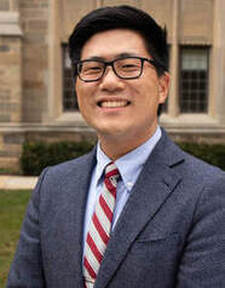
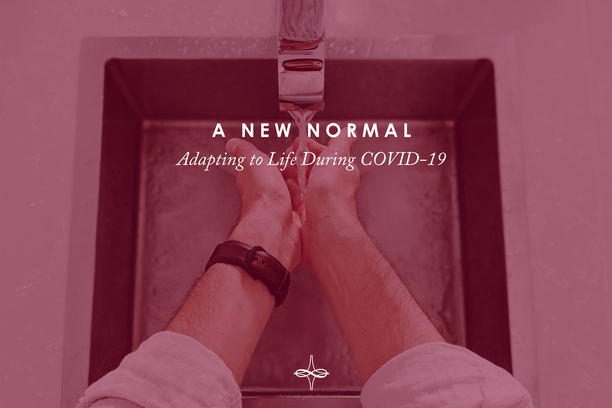
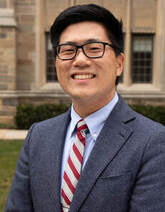
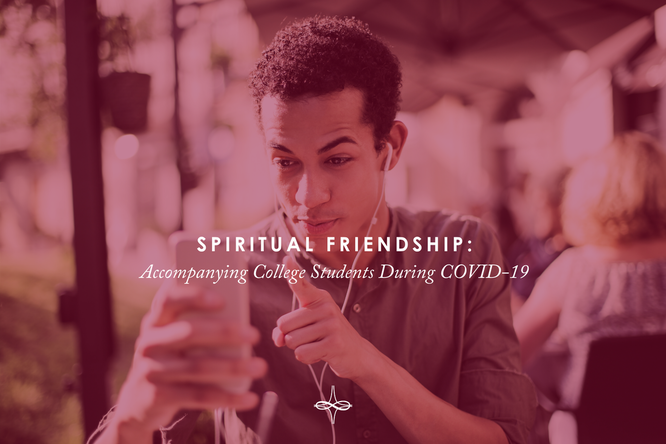
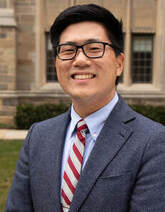


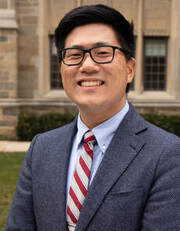
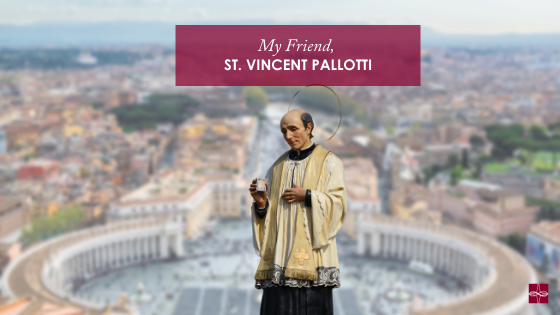
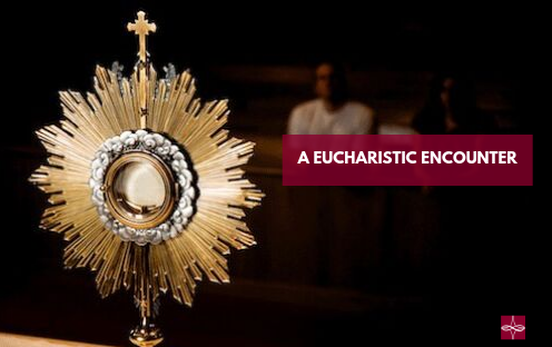
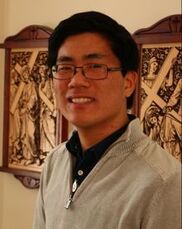
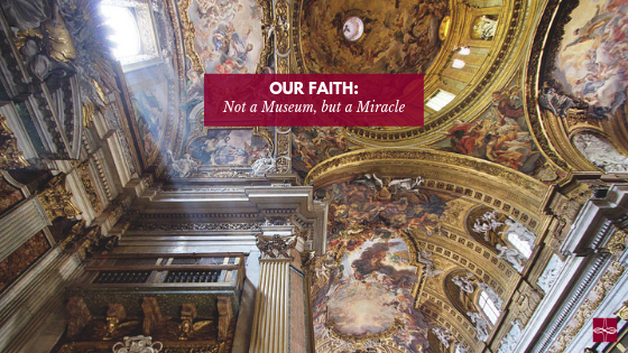
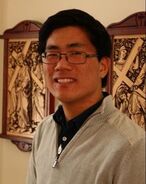
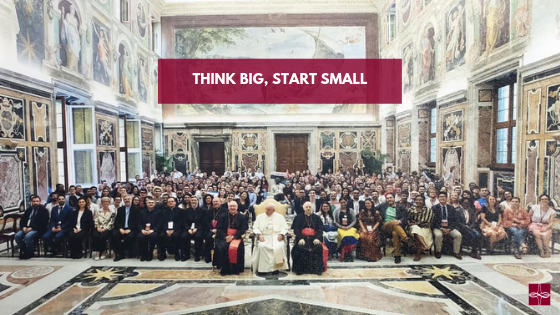
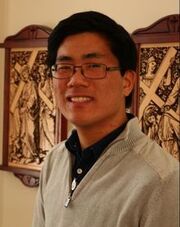
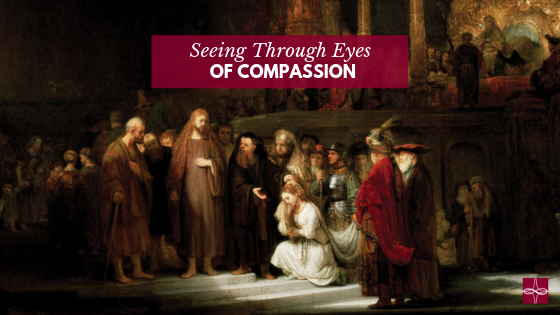
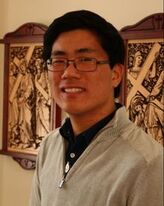
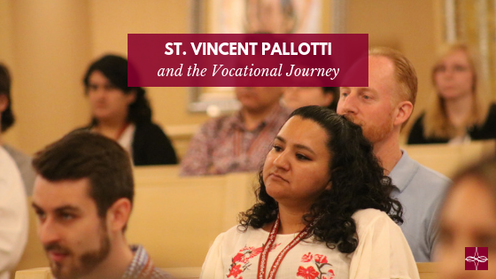
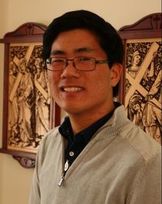
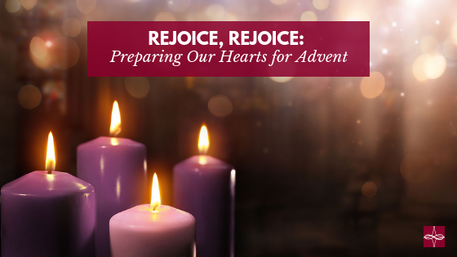

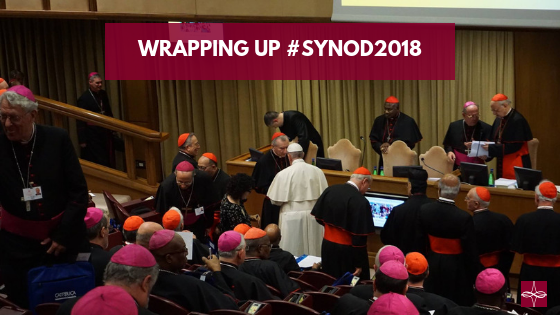

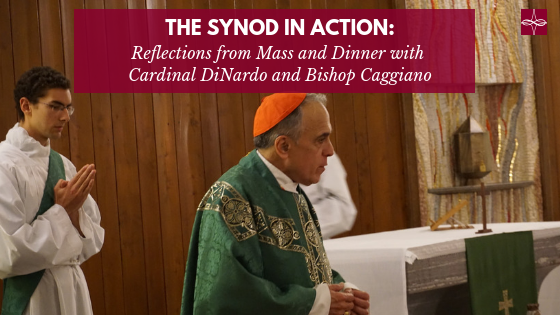
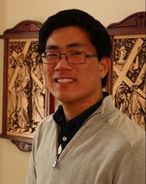
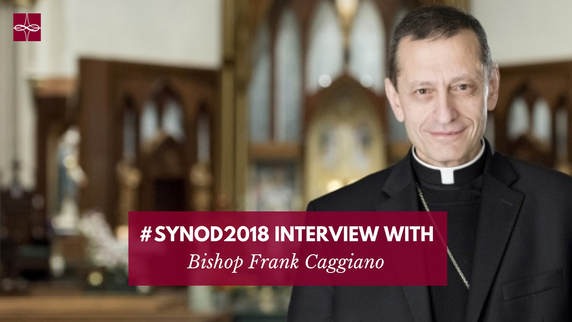
 RSS Feed
RSS Feed